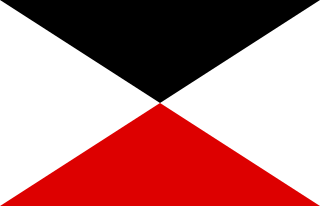
The IV Army Corps / IV AK was a corps level command of the Prussian and then the Imperial German Armies from the 19th Century to World War I.

The XVIII Army Corps / XVIII AK was a corps level command of the German Army before and during World War I.

The XVI Army Corps / XVI AK was a corps level command of the German Army before and during World War I.

The 1st Army was an army level command of the German Army in World War I. It was formed on mobilization in August 1914 from the VIII Army Inspectorate. The army was dissolved on 17 September 1915, but reformed on 19 July 1916 during the Battle of the Somme. It was finally disbanded in 1919 during demobilization after the war.

The 2nd Army was an army level command of the German Army in World War I. It was formed on mobilization in August 1914 from the III Army Inspection. The army was disbanded in 1919 during demobilization after the war.

The 3rd Army was an army level command of the German Army in World War I. It was formed on mobilization in August 1914 seemingly from the II Army Inspectorate. The army was disbanded in 1919 during demobilization after the war.

The 4th Army was an army level command of the German Army in World War I. It was formed on mobilisation in August 1914 from the VI Army Inspection. The army was disbanded in 1919 during demobilization after the war.

The 5th Army was an army level command of the German Army in World War I. It was formed on mobilization in August 1914 seemingly from the VII Army Inspection. The army was disbanded in 1919 during demobilization after the war.

The 7th Army was an army level command of the German Army in World War I. It was formed on mobilization in August 1914 from the II Army Inspection. The army was disbanded in 1919 during demobilization after the war.

The 17th Army was an army-level command of the German Army in World War I. It was formed in France on 1 February 1918 from the former 14th Army command. It served exclusively on the Western Front and was dissolved on 19 January 1919.

The 18th Army was an army level command of the German Army in World War I. It was formed against France on 27 December 1917 from the former Heeresgruppe Woyrsch command. It served exclusively on the Western Front and was dissolved on 2 January 1919.

Armee-Abteilung Falkenhausen / Armee-Abteilung A was an army level command of the German Army in World War I. It served on the left (southern) wing of the Western Front throughout its existence.

The Guards Reserve Corps was a corps level command of the German Army in World War I.

The I Royal Bavarian Reserve Corps / I Bavarian RK was a corps level command of the Royal Bavarian Army, part of the Imperial German Army, in World War I.

The XIV Reserve Corps was a corps level command of the German Army in World War I.

The Ersatz Corps was a corps level command of the German Army that existed briefly at the beginning of World War I.

The II Royal Bavarian Army Corps / II Bavarian AK was a corps level command of the Royal Bavarian Army, part of the Imperial German Army, before and during World War I.

The XI Army Corps / XI AK was a corps level command of the Prussian and German Armies before and during World War I.

The 54th Corps was a corps formation of the German Army in World War I. It was formed in September 1916 and was still in existence at the end of the war.

The Army Group Rupprecht of Bavaria or Army Group A was an Army Group of the German Army, which operated on the Western Front under command of Rupprecht, Crown Prince of Bavaria, between 28 August 1916 and 11 November 1918 during World War I. It was formed from the short-lived Army Group Gallwitz under Max von Gallwitz.



